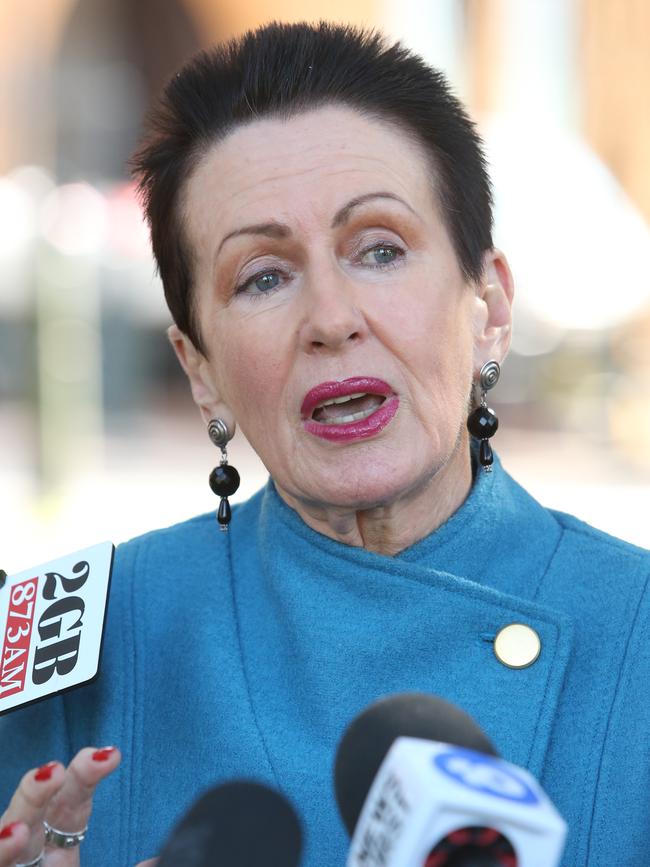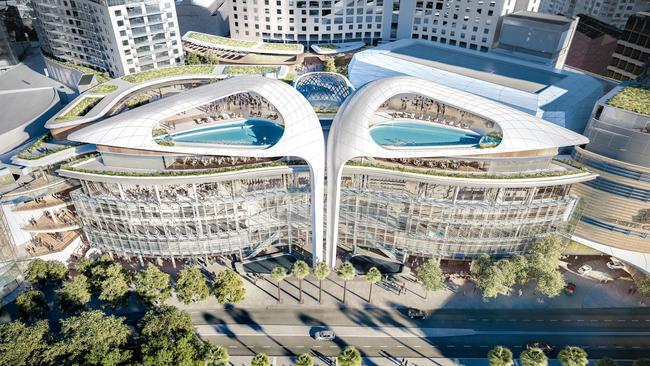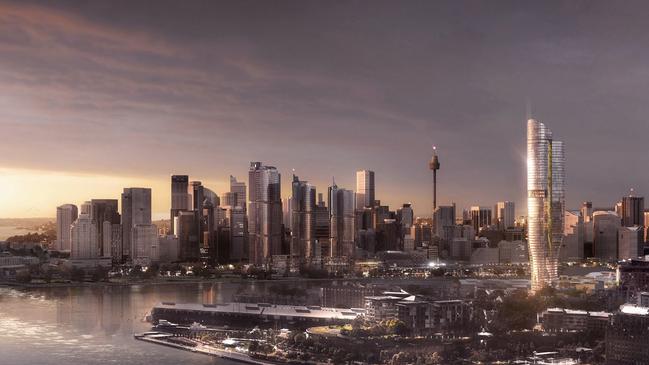Lord Mayor’s objections to Pyrmont Ritz hard to understand
To outsiders, Sydney must — at least if they can find a place to stay — seem like a tidy and efficient little jewel of a city, all strung out along its Harbourside coves and beaches.
Opinion
Don't miss out on the headlines from Opinion. Followed categories will be added to My News.
To outsiders, Sydney must — at least if they can find a place to stay — seem like a tidy and efficient little jewel of a city, all strung out along its Harbourside coves and beaches.
Spend a little time here, though, and the city looks less like a high achiever and more like a schoolkid whose reports always seem to come home marked, “needs to work harder to reach potential”.
No place is this more the case than with the issue of development, which is as much a question of who we want to be as Sydneysiders as it is about floorspace and height.
And nowhere across our entire sprawling basin is it more contentious than in the CBD and surrounds, managed by the City of Sydney under the grip of Lord Mayor Clover Moore.

Thanks in no small part to the city’s anti-development attitudes, Sydney is rapidly hurtling towards the worst of both worlds — far-out suburbs overrun with high density developments, and areas on the fringes of the CBD preserved in amber like fossilised monuments to bureaucratic obstructionism.
The saga of the attempt to build a Ritz-Carlton hotel in Pyrmont, on the edge of the CBD, sums up the problem perfectly.
And it shows how far Sydney has to go if we are to climb out of our present position — wedged between the two stools of charming backwater on the one hand and thriving city on the other.
Thanks perhaps to her dogmatic anti-development stance, Clover Moore has had a set against the proposed Ritz-Carlton, which is the sort of high-end, high-value project most mayors would be falling all over themselves to land. Particularly given the lack of world-class hotel offerings in a city that only recently cut the ribbon on a huge International Convention Centre (those convention-goers need someplace to hang their lanyards at the end of the day, after all).
First there was the objection that the thing would be too tall, at 237m.
Never mind the thing was given the tick by a design review panel including a former NSW government architect, and that plenty of other projects in the area including the Jacksons Landing development, long ago exceeded the 28m maximum height generally allowed in the area.

Even more boggling though is the Lord Mayor’s latest complaint, that the structure might house too many — wait for it — luxury apartments.
Speaking at a public meeting at Customs House at the end of last month, Moore told the assembled that: “The (Ritz-Carlton) hotel is relative small compared to those being built elsewhere in our city, and it is the lucrative luxury apartments … that are the main driver of the casino tower’s height”.
Let’s see if I’ve got this right: the hotel is a problem both because it’s too tall, and because it’s too small?
Even if the tower did turn out to be all apartments and no hotel, surely the only answer is, so what?
Hasn’t the Lord Mayor been telling us for years that Sydney is — or should be — a “city of villages”? Correct me if I’m wrong, but one of the most important (indeed, some experts would say, the critical) elements of a village is having people to live there.
But there’s no indication that there won’t be a luxury hotel there. Which is a far cry from another hotel proposed for Bligh Street in the CBD.
While the Ritz-Carlton is slated to house over 21,0000 square metres of floor space for its rooms and guest amenities, the proposed development on Bligh has pencilled in around 18,000sqm. So far, so comparable. The Bligh Street tower will also rise to 226m, comparable to the 213m to 237m heights bandied about for the Ritz-Carlton.

Yet, as was reported recently, the mixed office and hotel development could wind up being sold off vacant possession and turned entirely into offices.
Likewise, it’s odd for the Mayor to, at the public meeting mentioned above, tout the city’s approval of a 28-storey hotel in Circular Quay as an example of her pro-development bona fides.
Yet that development, as it turns out, is itself actually comprised of two towers: one a 28-storey hotel, the other a 59-storey residential tower.
It’s enough to make one want to just order room service and turn in for the night.
But it’s also endemic of the confused way we plan and build in Sydney, not just in the city but across the metropolitan area.

While the idea of stringing out development along train lines makes superficial sense, all too often the result is ugly, gimcrack developments badged as “lifestyle precincts” set back and up from the surrounding street life — exactly the opposite of what good urban planning calls for.
By making getting in and out the focus, the not-so-subliminal message is that these apartments are little more than vertical dormitories to be escaped with maximum convenience.
Compare this to other cities such as New York where with the exception of the occasional setback urban plaza or pocket park, towers are built essentially right up to the footpath.
If the horse has not completely bolted on what sort of city we wish to be in the future, we need to talk about growing the city from the centre out.
That means bringing more, not less, development — including big-name hotels like the proposed Ritz-Carlton — to areas like Pyrmont and creating the sort of dense, interesting environments that people want to live in and work and visit.

